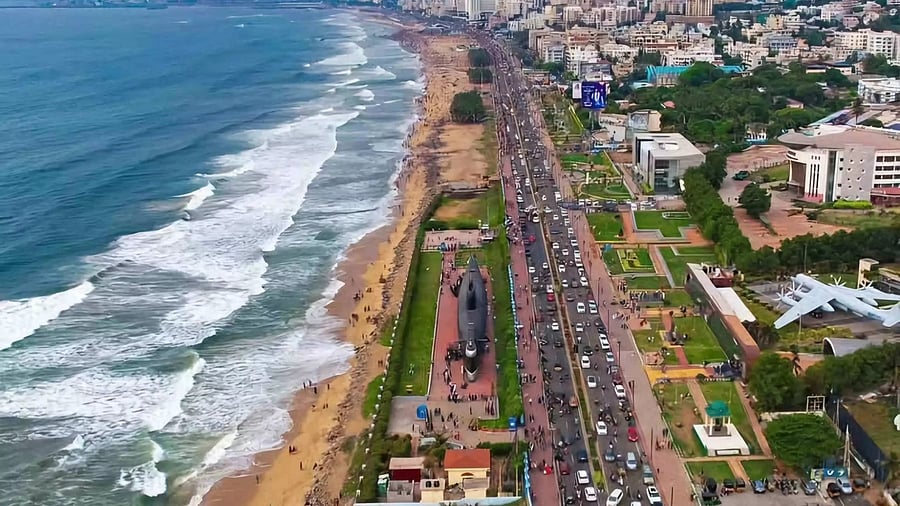
According to a senior Andhra Pradesh government official involved in the negotiations with Google, Visakhapatnam was chosen for the project for its access to land, water, and energy resources.
Credit: X@Indianinfoguide
Hyderabad: Defending Google's hyperscale AI and data hub in Visakhapatnam, Andhra Pradesh IT Minister Nara Lokesh, credited with bringing Google’s $15-billion investment to the State, has argued that disruptive technologies often face misplaced skepticism.
“When computers were introduced in the Secretariat in the 1990s, there were fears they would cause radiation or job loss. Had N Chandrababu Naidu not taken that visionary leap, would Hyderabad have become Cyberabad today?” he said, emphasising continuity of vision.
Lokesh added that Andhra Pradesh plans to build 6 GW of data centre capacity in Visakhapatnam, supported by a dedicated economic corridor ensuring reliable power and water supply. “AI is here to stay. The question is whether we embrace it or get replaced,” he said.
Independent technology analyst P Geethanand Reddy from Hyderabad struck a more pragmatic tone. “It’s true that data centres consume large volumes of water for cooling. But globally, innovative systems now allow even seawater to be used. Singapore and Norway have already implemented such solutions. Being a coastal city, Vizag shouldn’t face major water issues,” Geethanandh Reddy told DH.
Proponents argue that India’s expanding renewable energy base makes it well-positioned to host data centres sustainably. A senior Andhra Pradesh government official involved in the Google negotiations said Vizag was chosen precisely for its access to land, water, and energy.
“Several power plants in the neighbouring Odisha can easily supply additional capacity. What’s needed is to strengthen transmission and evacuation corridors, which we plan to complete before Google’s first phase becomes operational,” the official told DH. “Tier II cities like Vizag have the ideal combination of resources and cost advantage,” the official added.
While Mumbai will continue to dominate India’s data centre landscape, emerging markets like Hyderabad, Bengaluru, and Pune are expected to witness exponential growth. Moreover, operators and investors are now eyeing Tier II and Tier III cities for early entry advantages.
According to a report by Toronto-headquartered Colliers, as of April 2025, smaller hubs such as Vijayawada, Jaipur, Mohali, Ahmedabad, Nashik, and Kochi collectively accounted for 6% (82 MW) of India’s total data centre capacity, spread over about one million square feet of real estate. Vijayawada leads this tier, followed by Mohali and Jaipur.
With rapid 5G rollouts, deeper cloud adoption, the rise of e-commerce, and state-specific data centre policies, new growth clusters are emerging across Indore, Raipur, Patna, Lucknow, Vizag, Hubballi, Coimbatore, and Madurai.
Also, the Indian data centre sector is no longer limited to hyperscale or colocation models. Rising demand for real-time analytics, low latency, and improved app performance is pushing the rise of 'edge data centres' that are smaller facilities closer to end users.
By bringing computation near the source of data, edge centres improve speed, security, and business continuity. They also distribute energy demand, reducing concentration risk in big cities.
Colliers data shows that the proportion of large-scale data centres (>20 MW) has grown from 42% in 2020 to 56% in 2025. Within this, the 21–50 MW range accounted for nearly 44% of new supply, driven largely by Mumbai. In the >50 MW category, Chennai led with 45% of completions during the same period.
Looking ahead, data centres exceeding 50 MW are projected to form nearly two-thirds of total Indian capacity by 2030.